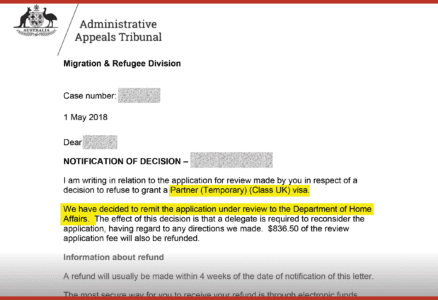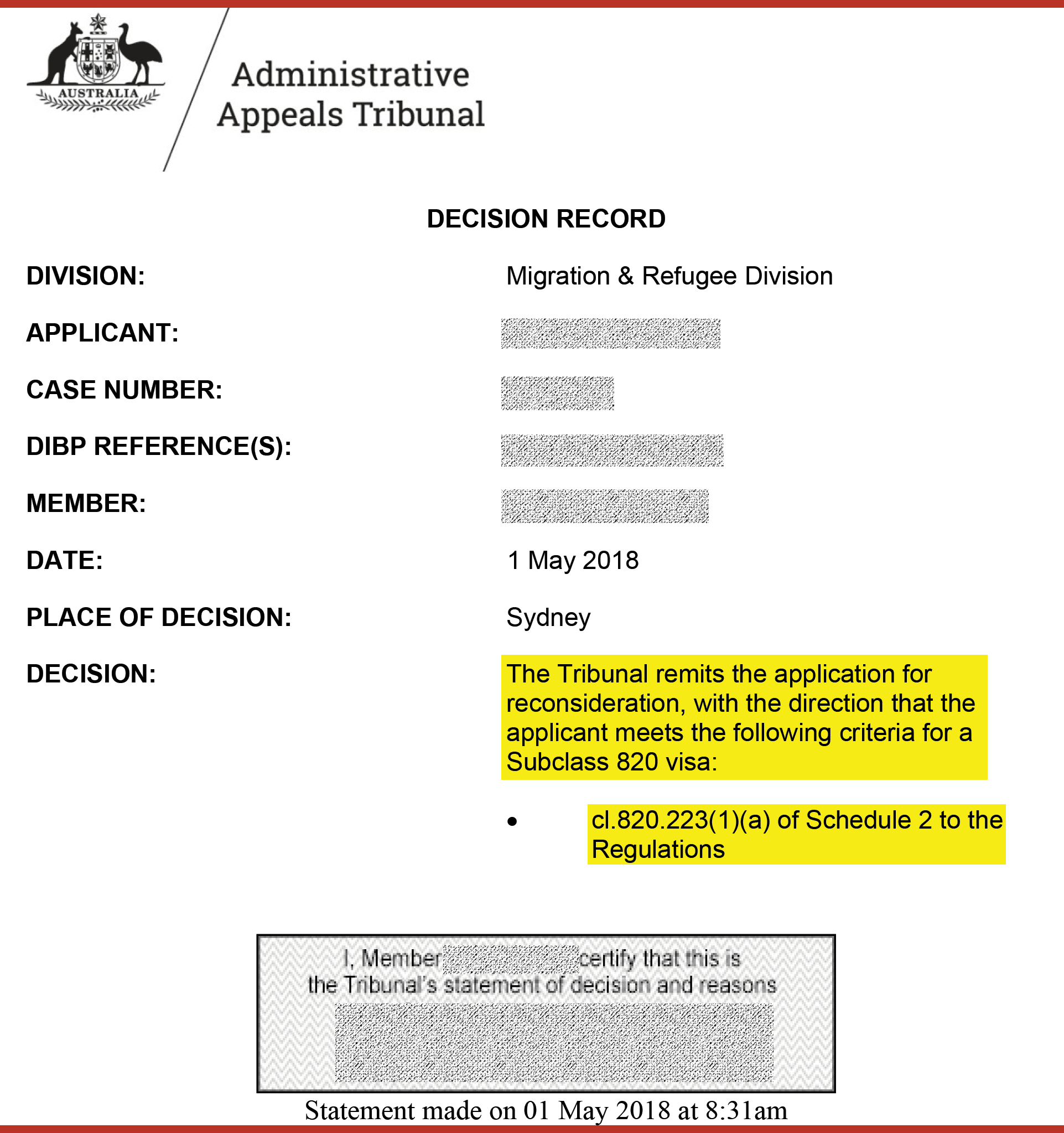HOW TO IMPROVE YOUR SUCCESS RATE IN MIGRATION APPEAL
Appeal Statistics
In 2016-2017, migration appeal to the Administrative Appeal Tribunal (AAT) has increased substantially by 7,675 cases (up 41%) to a total of 26,604.
This is the highest number of applications since the establishment of the Migration Appeal Division. This suggests a significant increase in visa refusals and cancellations by the Department of Immigration.
Of the 26,604 total number of AAT appeal cases in 2017, it comprised of:
- Partner visa – 4,001
- Student Refusal – 4,418
- Student Cancellation – 1,137
- Nomination/Sponsor Approval – 2,067
- Permanent Business – 1,007
Approximately 38% (i.e. less than half) of the cases finalised in 2017 was successful. Where the case relates to refugee visa, only 11% was successful.
How To Increase Your Success Rate?
From our years of experience in successfully representing applicants in migration appeals, we have a proven method of substantially improving your chance of succeeding.
To stand a chance of succeeding, you must at least do the following.
Firstly, carefully review Immigration’s decision and formulate your grounds of appeal.
Applying to AAT for review is not just about filling in some forms, collating some documents or just writing a letter to the AAT. You must know what grounds are there and which one of these grounds are applicable to your case and acceptable by AAT. These grounds could be merits in nature or error of law. You may need a lawyer who is experienced in migration law to help you with formulating these grounds. In brief, you must know what the Tribunal is looking for.
Secondly, substantiate your ground with evidence. You need to carefully consider what type of evidence would be convincing. You have to carefully reviewed every piece of evidence and tactfully put them together. Your materials must not be inconsistent. In short, you must provide the Tribunal with what they are looking for.
Thirdly, strengthen your appeal with past case law. AAT is a quasi-judicial body. The Tribunal member is bound by past decisions of the AAT or a higher court (e.g. the Federal Court). The key here is to find past cases relevant specifically to your situation and use it to support your grounds. In all, you must know the process and the framework in which the Tribunal must follow


ABOUT THE WRITER
Kelvin Tang has over 14 years’ experience practising law in Western Australia. He is the founder and Principal Partner of Tang Law based in Perth, Western Australia. Kelvin is a Registered Migration Agent (MARN: 1386452) and has extensive experience in providing migration advice to clients, advising on “Eligible Businesses” within the definition of the Migration Regulations, assisting migrants (investor of the business) with satisfying migration requirements, making visa applications and appealing cancelled or refused visas in the Federal Court of Australia, Administrative Appeals Tribunal and Migration Review Tribunal. Kelvin also has extensive experience in civil litigation, commercial and corporate law matters.


